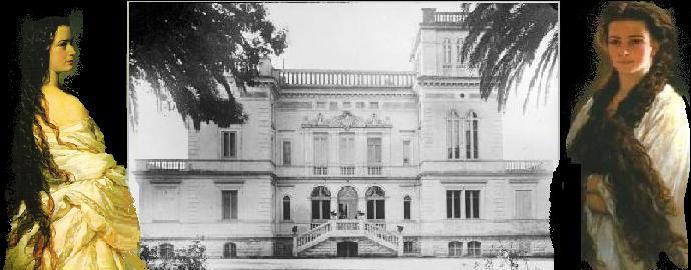

She commissioned the building of a small but exquisite palace on Corfu designed by Italian architect Raffaele Caritto. Ernst Herter, a famous German sculptor, created numerous works inspired from Greek mythology. His famous sculpture Dying Achilles forms the centerpiece of the Achilleion Gardens. The palace, with its lush gardens and breathtaking vistas of the Ionian sea, abounds with scenes of classical history and art. Sissi often visited the place.
After her death, the villa sat unused and neglected until German Kaiser Wilhelm II purchased it from her heirs in 1907, and it was he who renamed it ‘Achilleion’ as a tribute to the hero Achilles. He loved the place as much or more as she once had and fully restored it. Expanding on the main theme of the grounds, Wilhelm commissioned his own Achilles statue from sculptor Johannes Götz. It is a tall, magnificent bronze sculpture that stands as guardian to the Gardens facing north.
Wilhelm was well-liked by local villagers and he enthusiastically took great interest in area archaeological digs and personally took part in some. He built local bridges and enhanced the palace with his own funds so he could use it both as a summer residence and a place to host diplomatic missions. The Kaiser visited the palace until 1914 when World War One was declared. The Achilleion was used during the war by French and Serbian troops as a military hospital. After World War I, the Achilleion was torn away from the Kaiser and given in way of “reparations” to Greece by terms of the Versailles Treaty.
The Achilleion property was used to house government services and a number of its valuable artifacts were auctioned off. During World War II, the Axis used the Achilleion as military headquarters, and after the war it went to the Hellenic Tourist Organisation. It was leased to a private company that used the upper level as a casino and the lower grounds as a museum from 1962 to 1983. Then the palace management was returned to the Hellenic Tourist Organization.